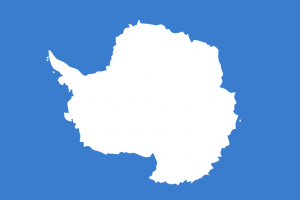After a journey with the Antarctic fur seal, the Encyclopedia of Marine Mammals features Antarctic marine mammals in general. These robust marine mammals live within the Antarctic convergence, an invisible natural border where the extremely cold Southern Ocean meets warmer water from the north. Most marine mammals who live further north do not cross this invisible line that separates the hardiest marine mammals who thrive in extreme cold. Some Antarctic marine mammals do leave during the coldest winter months migrating north for warmer waters, but others stay and benefit from the large amount of winter sea ice.
According to the article authored by Ian Boyd: “The Southern Ocean accounts for about 10% of the world’s oceans but it probably supports >50% of the world’s marine mammal biomass, including six species of pinnipeds, eight species of baleen whales, and at least seven species of odontocete (toothed) whales.” Some of these animals include crabeater seals, Weddell seals, Ross seals, leopard seals, elephant seals, hourglass dolphins, long-finned pilot whales, killer whales, bottlenose whales and minke whales.
Now you might be wondering how can these animals account for more than 50% of the world’s marine mammal biomass when there doesn’t seem to be very many. The answer is linked to the definition of biomass, which according to the encyclopedia means “a measure of the amount of plant or aminal matter in a given context or system, expressed in terms of aggregate weight.” This means that for the few marine mammals species who call the Antarctic home, there are a lot of the same species and together they weigh a lot.
For example, there are an estimated 7 to 14 million crabeater seals living in the Antartic and more than 3 million Antarctic fur seals. Now together how much do all these animals weigh? I have no idea, but you get the idea…there is a lot of biomass hanging around the Antarctic.
But how do all these animals survive and thrive in such extreme cold? The answer is krill.
Many Antarctic marine mammals eat krill that feed on algae, which grows underneath the pack ice. Krill is a high-energy food source that sustains animals on different levels of the food chain keeping marine mammals in the Antarctic healthy and happy. Ironically enough, the crabeater seal eats krill, in fact that’s all the crabeater seal eats with the most specialized diet of all the seals. So who knows why it’s called the crabeater seal, weird.
Thanks to protections established in the 20th Century, many Antarctic seal populations have recovered from sealing, but some of the largest baleen whales have not recovered from whaling. Blue whales are still struggling in the Antarctic and are considered to be endangered. Humpback and southern right whales are increasing in numbers, but because they have such strict migration routes, any potential habitat disruptions could cause problems.
Let’s leave the Antarctic marine mammals in peace. Antarctica is one of the few places in the world where marine mammals don’t have to waste a lot of energy worrying about humans and it’s really too cold there for us anyway.

Thanks for another great posting. Krill are amazing creatures for being so small. They make amazing sacrifices so our marine mammals can survive. Thank you krill!
Yes, I am on board with krill. More fascinating info, and a new word for me: pinniped!
Are there any breed of foxes in Antarctica?
Hi Billy, No foxes live on Antarctica. The only mammals spending time on land there are seals and humans.